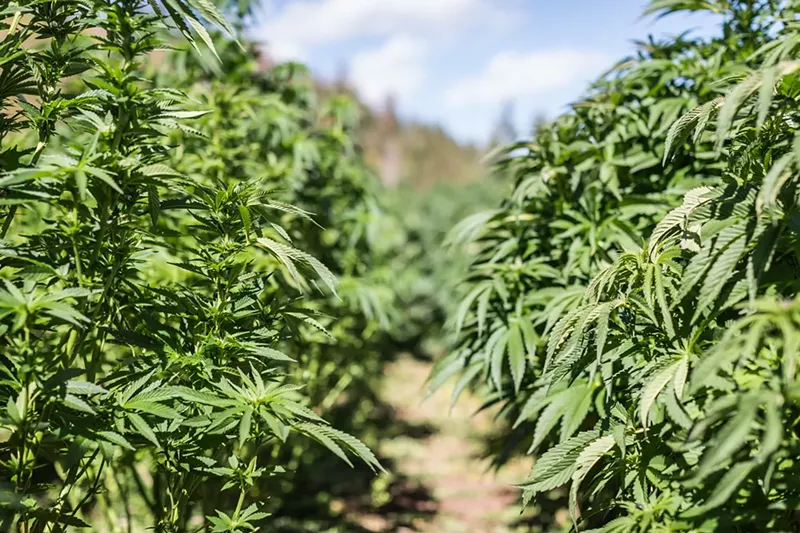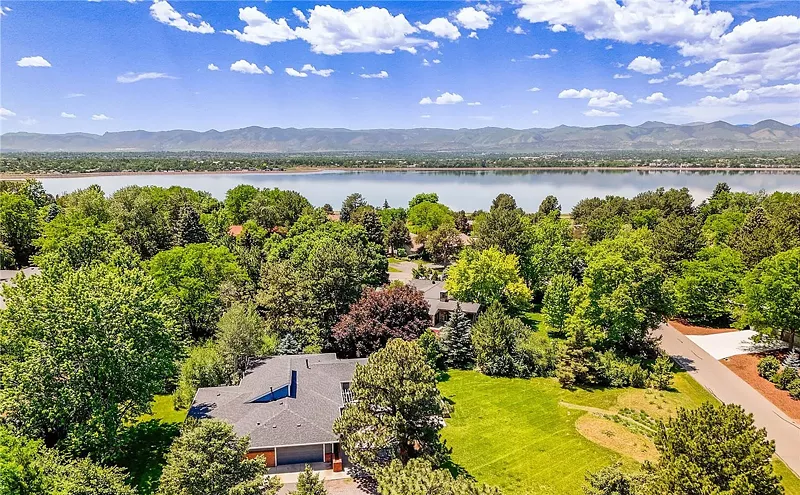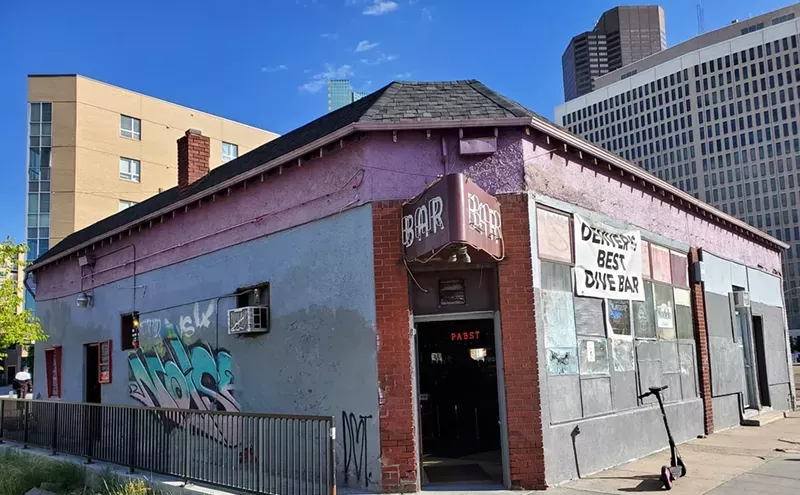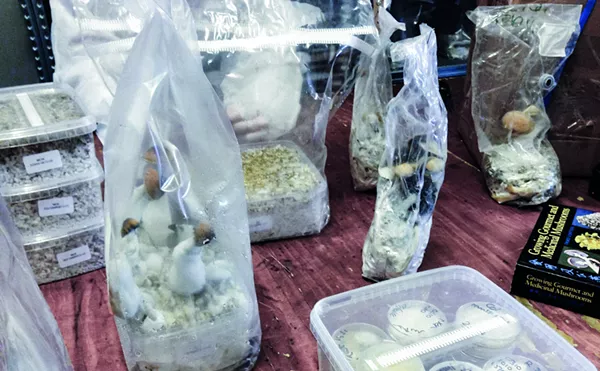A few years back, Yeti Farms marijuana cultivation owner Shawn Honaker and his staff were facing an oncoming fire.
"We had a fire that was about three-quarters of a mile away from the farm and had to instantly harvest over 36 hours," Honaker related during an August 9 rulemaking meeting with the state Marijuana Enforcement Division. "Thank God the plant count was feasible. But we were worried about smoke damage and the fire impacting the farm itself."
Honaker said moving his crop to a temporary space like a distribution facility or a neighboring farm located farther away from the fire could've alleviated the damage, but because marijuana cultivation is so highly regulated, the plants had to stay put.
Moving marijuana to prevent harm from bad weather or natural disasters has been a legal challenge for growers since 2014, when Colorado's recreational pot industry began. To mitigate those losses, the Colorado State Legislature passed House Bill 1301 earlier this year, giving outdoor marijuana cultivators easier pathways to protect their crops from adverse weather events and damage. But first the MED has to figure out the fine details of state-approved marijuana contingency plans.
Ultimately, Honaker wants better guidance for protecting his growing operation against damage from more common incidences, like hail or snow. He suggested temperature control for instances of a freeze, or a pathway to getting around 24/7 surveillance rules for marijuana cultivations in the instance that growers need to temporarily cover their plants.
Starting next year, the MED will accept marijuana crop contingency plans from outdoor growers, but growers must submit a copy of those plans to their local government, as well. And if a cultivation wants to transport plants to a different local jurisdiction as part of the contingency plan, that jurisdiction will need to be notified, too.
In addition, licensees are expected to file a contingency plan seven days before executing those plans, according to the proposed rules. So far, the MED has focused on addressing contingency plans for outdoor medical marijuana cultivations, but the same rules should appear for retail grows, according to the department.
In the case of a more rapid event, like a wildfire, physically moving plants to a temporary location is an option, but maneuvering around licensing and unregulated zones limits the scope of available storage sites, growers complain. Additionally, most outdoor cultivators grow in the ground or raised bedding, so moving plants could render them useless or kill them during an early, speedy harvest.
“Nobody wants to dig up their plants and move them unless they absolutely have to. At the end of the day, if the owner or operator decides [to do that] for the safety of the plant or for public safety, then we should create a pathway for that," Marijuana Industry Group director Truman Bradley said during the August 9 rulemaking session.
The MED suggested that licensees log a transport manifest, essentially a document detailing the crew and freight on the vehicle. This helps mitigate unnecessary prodding from law enforcement if a transport vehicle gets pulled over, but most growers would like to avoid transporting altogether.
"Moving the plants is the extreme solution, but not all adverse events are going to require it," Bia Campbell, a consultant with marijuana policy firm VS Strategies, said during the August 9 meeting.
Once the plants make it to their temporary storage facility, the MED suggests early harvest protocols and emergency inventory tracking. However, industry proponents feel some of the underlying steps could take too much time during an emergency.
"Creating solutions that become bigger problems during a severe weather emergency could involuntarily turn into a major issue for outdoor grows in rural areas that have limited local licensing support," Cristen Hodgers, a representative of Colorado Springs medical dispensary Jade Kola, said during a later MED meeting on August 20.
The MED must file its findings and recommendations for the new law by November 1.

Audio By Carbonatix
[
{
"name": "GPT - Billboard - Slot Inline - Content - Labeled - No Desktop",
"component": "23668565",
"insertPoint": "2",
"requiredCountToDisplay": "2"
},{
"name": "STN Player - Float - Mobile Only ",
"component": "23853568",
"insertPoint": "2",
"requiredCountToDisplay": "2"
},{
"name": "Editor Picks",
"component": "17242653",
"insertPoint": "4",
"requiredCountToDisplay": "1"
},{
"name": "Inline Links",
"component": "18838239",
"insertPoint": "8th",
"startingPoint": 8,
"requiredCountToDisplay": "7",
"maxInsertions": 25
},{
"name": "GPT - 2x Rectangles Desktop, Tower on Mobile - Labeled",
"component": "24956856",
"insertPoint": "8th",
"startingPoint": 8,
"requiredCountToDisplay": "7",
"maxInsertions": 25
},{
"name": "Inline Links",
"component": "18838239",
"insertPoint": "8th",
"startingPoint": 12,
"requiredCountToDisplay": "11",
"maxInsertions": 25
},{
"name": "GPT - Leaderboard to Tower - Slot Auto-select - Labeled",
"component": "17676724",
"insertPoint": "8th",
"startingPoint": 12,
"requiredCountToDisplay": "11",
"maxInsertions": 25
}
]












